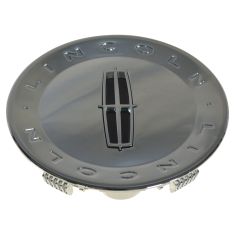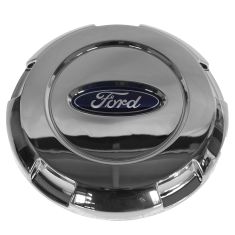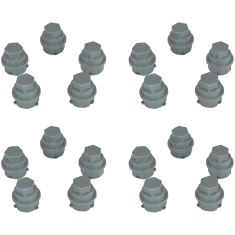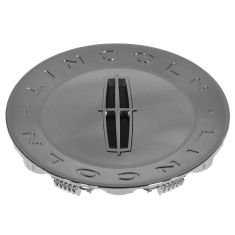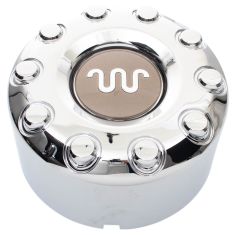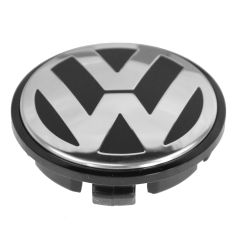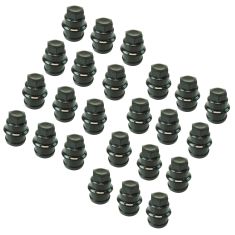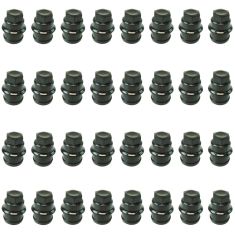Lug Nut & Wheel Related
-
-
- Air Deflectors & Valance Panels
- Battery Trays & Related
- Body Panels
- Bumpers & Related - Front & Rear
- Convertible Tops, Soft Tops, & Parts
- Decal & Stripe Kits
- Emblems & Nameplates
- Engine Compartment Trim
- Frame Parts & Bushings
- Fuel Door Parts
- Fuel Tank Filler Neck
- Grille
- Header Panel
- Hood & Hatch Lift Supports
- Hood Latch & Catch Brackets
- Hood Release Cable
- Jack Pads
- Radiator Supports
- Rust Repair Panels
- Splash Shields & Fender Liners
- Tailgate Cables
- Tailgate Hinges & Related
- Weatherstripping
-
- Car Covers
- Exterior Lighting
- Exterior Parts & Accessories
- Exterior Safety & Security
- Exterior Storage
- Fender Flares
- License Plate Brackets & Frames
- Mud Flaps & Splash Guards
- Nerf Bars, Side Steps, Running Boards
- Radio Antenna
- Rain Deflectors
- Roll Bars, Light Bars, & Related
- Roof Rack
- Skid Plates
- Spare Tire Carriers & Related
- Spare Tire Covers
- Tire Care
- Tonneau Covers
- Tow Hooks & D-Shackles
- Towing Accessories
- Trailer Hitch & Components
-
- Accelerator Pedal Pad
- Auto Carpet
- Brake Pedal Pad
- Clutch Pedal Pad
- Console Parts
- Dash Pad Cover
- Dash Vents
- Floor Mats & Liners
- Horns & Horn Parts
- Interior Parts & Accessories
- Mirror - Interior Rear View
- Seat Cover and Sets
- Seat Heater Kits
- Seat Parts and Accessories
- Sun Visors & Related
- Trunk & Cargo Parts
-
- Accelerator Pedals & Sensors
- Alarms, Control Modules, & Remote Start
- Cruise Control Switch & Lever
- Electrical Parts
- Hazard Switch
- Ignition Key Lock Cylinder
- Ignition Switch
- Keyless Entry Remote & Related
- Neutral Safety Switch
- Parking Assist Cameras & Monitors
- Power Mirror Switch
- Power Seat Switches
- Power Window Switch
- Radio, Navigation, Entertainment
- Reverse Light Switch
- Trunk Release & Lock Solenoids
- Turn Signal Switches and Levers
- Windshield Wiper Switch
-
- Idler Arm
- Pitman Arm
- Power Steering Hoses
- Power Steering Oil Cooler
- Power Steering Pressure Sensor
- Power Steering Pump
- Power Steering Pump Cooling Fan
- Power Steering Pump Pulley
- Power Steering Pump Reservoir
- Steering Dampers
- Steering Knuckles and Spindles
- Steering Rack and Gear Boxes
- Steering Shafts & Couplers
- Steering Wheels & Column Parts
- Tie Rods & Adjusting Sleeves
-
-
-
-
-
-
-
-
359
36
10
10
-
Notify When Available$46.46Save 60%List $115.95 Save $69.49Brand: Ford OEM - 9W1Z-1130-B$46.46Save 60%List $115.95 Save $69.49
-
Notify When Available$21.01Save 64%List $57.95 Save $36.94Brand: Ford OEM - 4L3Z-1130-AB$21.01Save 64%List $57.95 Save $36.94
-
Notify When Available
Replaces Chevrolet Buick Pontiac Saturn Wheel Nut Cap 20 Piece Set Dorman Pik-A-Nut 1AWHK00026
Brand: Dorman Pik-A-Nut - 1AWHK00026$31.95Save 24%List $41.95 Save $10.00Brand: Dorman Pik-A-Nut - 1AWHK00026$31.95Save 24%List $41.95 Save $10.00 -
Notify When Available
Replaces Lincoln Mark LT Navigator Wheel Center Cap Ford OEM AL7Z-1130-B
Brand: Ford OEM - AL7Z-1130-B$85.45Save 28%List $118.95 Save $33.50Brand: Ford OEM - AL7Z-1130-B$85.45Save 28%List $118.95 Save $33.50 -
Notify When Available$59.95Save 38%List $95.95 Save $36.00Brand: Ford OEM - FC3Z-1130-D$59.95Save 38%List $95.95 Save $36.00
-
Notify When Available
Replaces Ford F150 Focus Mustang Wheel Center Cap Ford OEM 2M5Z-1130-AA
Brand: Ford OEM - 2M5Z-1130-AA$17.26Save 64%List $47.95 Save $30.69Brand: Ford OEM - 2M5Z-1130-AA$17.26Save 64%List $47.95 Save $30.69 -
Notify When Available$41.95Save 38%List $67.95 Save $26.00Brand: Volkswagen - 3B7601171XRW$41.95Save 38%List $67.95 Save $26.00
-
Notify When Available$67.95Save 26%List $91.95 Save $24.00Brand: Dorman Auto Grade - DMWHK00023$67.95Save 26%List $91.95 Save $24.00
-
Notify When Available
Replaces Chevrolet GMC Cadillac Wheel Nut Cap 24 Piece Set Dorman Pik-A-Nut 1AWHK00143
Brand: Dorman Pik-A-Nut - 1AWHK00143$47.95Save 30%List $68.95 Save $21.00Brand: Dorman Pik-A-Nut - 1AWHK00143$47.95Save 30%List $68.95 Save $21.00 -
Notify When Available
Replaces Chevrolet GMC Cadillac Wheel Nut Cap 32 Piece Set Dorman Pik-A-Nut 1AWHK00140
Brand: Dorman Pik-A-Nut - 1AWHK00140$57.95Save 28%List $79.95 Save $22.00Brand: Dorman Pik-A-Nut - 1AWHK00140$57.95Save 28%List $79.95 Save $22.00
loading...
Choose the Make of Your Vehicle
